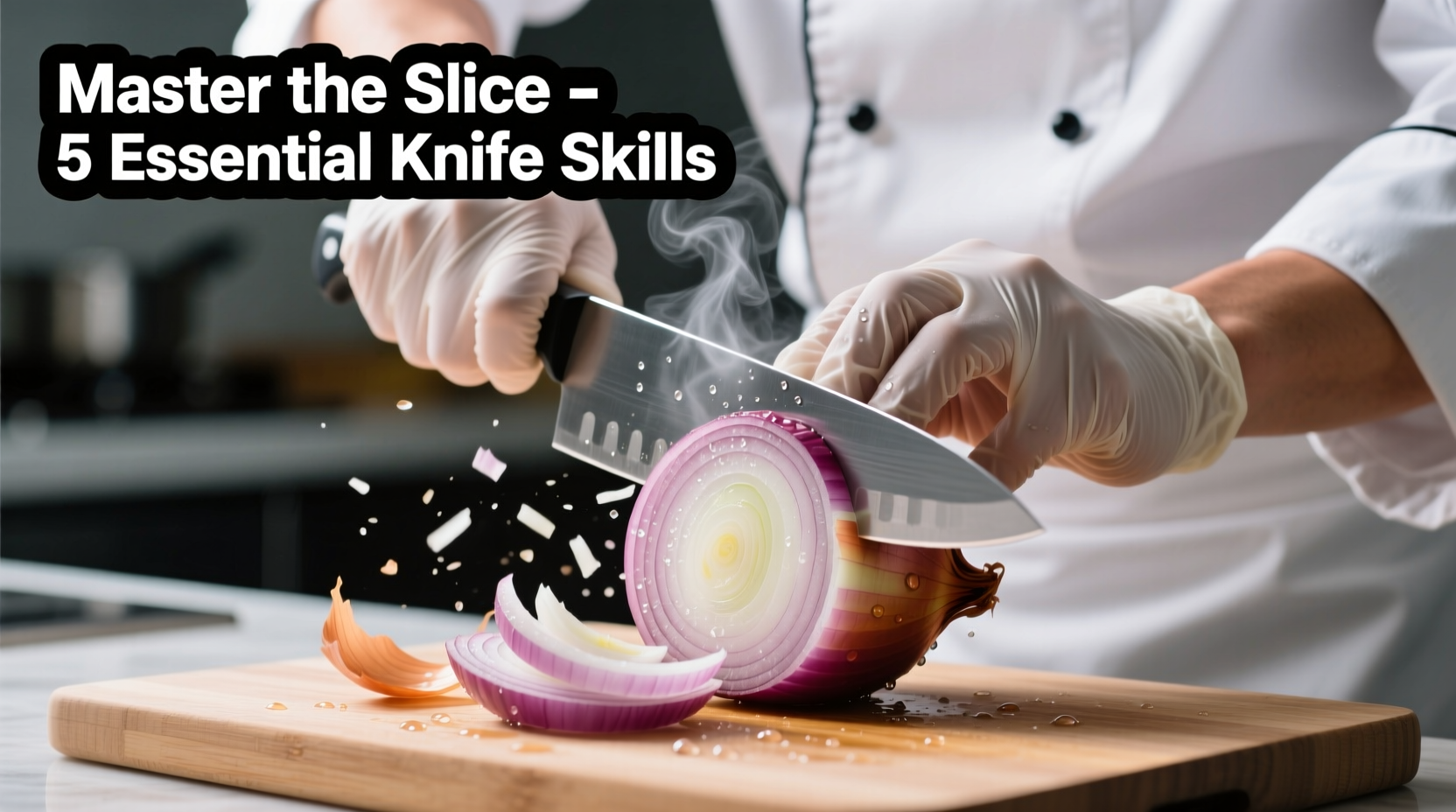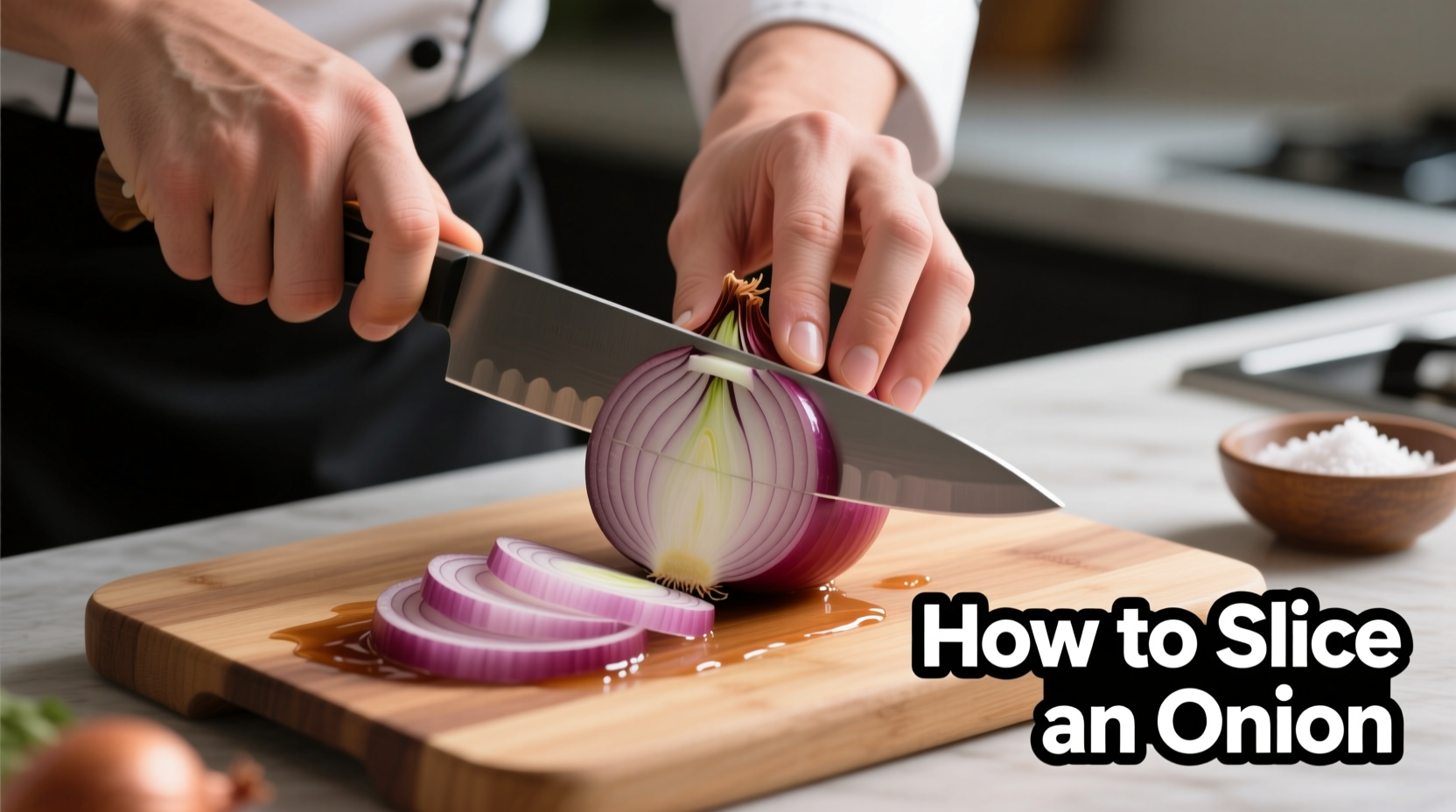Mastering the art of onion slicing transforms your cooking experience—reducing tears, preventing uneven pieces, and ensuring consistent cooking results. Whether you're preparing a French onion soup or a fresh salsa, proper technique makes all the difference in flavor distribution and presentation.
The Foundation: Understanding Onion Anatomy
Before reaching for your knife, recognize that onions grow in concentric layers around a central core. The root end contains sulfur compounds that cause eye irritation when released. Professional chefs know that preserving the root structure until the final cut minimizes tear production while maintaining control over the onion halves.
| Slicing Technique | Best For | Cutting Time | Consistency |
|---|---|---|---|
| Julienne (matchstick) | Stir-fries, garnishes | 2 minutes | ★★★★☆ |
| Dice (small cubes) | Sauces, salsas, soups | 3 minutes | ★★★☆☆ |
| Wedge cuts | Grilling, roasting | 1.5 minutes | ★★★★★ |
| Thin slices | Ceviche, sandwiches | 2.5 minutes | ★★★☆☆ |
Step-by-Step: The Professional Slicing Method
Preparation Phase: Setting Up for Success
Choose a sharp 8-inch chef's knife—dull blades crush onion cells, releasing more irritants. Place a damp towel under your cutting board to prevent slipping. Position yourself with good lighting and adequate ventilation. According to the U.S. Food and Drug Administration's food safety guidelines, proper food preparation surfaces reduce cross-contamination risks.

Execution: The Five-Step Slicing Process
- Stabilize and trim: Cut 1/4 inch off both ends. Remove the papery skin and outer layer.
- Halve through the root: Position the onion vertically and cut through the equator, keeping the root end intact.
- Position for control: Lay each half flat-side down on the cutting board with the root end facing away from you.
- Make vertical cuts: Starting from the top end, make even vertical slices toward (but not through) the root end.
- Complete the slice: Angle your knife and make horizontal cuts from the top toward the root, then slice crosswise for perfect pieces.
Advanced Techniques for Specific Culinary Applications
Different recipes demand different cuts. For French onion soup, use thin slices (1/8 inch) to maximize caramelization surface area. When preparing pico de gallo, dice onions to 1/4 inch cubes for optimal texture integration. The University of Illinois Extension confirms that consistent sizing ensures even cooking and flavor distribution in dishes.
Minimizing Tears: Science-Backed Strategies
Onions release syn-propanethial-S-oxide when cut—a volatile compound that reacts with eye moisture to form sulfuric acid. Effective mitigation strategies include:
- Cooling onions for 30 minutes before cutting slows gas release
- Using a sharp knife creates cleaner cuts with less cell damage
- Cutting under a vent hood directs gases away from your face
- Chilling your knife blade reduces vaporization of compounds
Safety Considerations Every Home Cook Should Know
Knife safety begins with proper grip—hold the blade handle firmly while curling fingertips of your guiding hand inward. The American Culinary Federation reports that 68% of kitchen cuts occur during vegetable preparation, with onions ranking third behind carrots and potatoes. Always cut away from your body and maintain three-point contact between the onion, knife, and cutting board for maximum control.
Common Mistakes That Compromise Results
- Cutting through the root end too early (causes pieces to separate)
- Using a rocking knife motion (creates uneven thickness)
- Pressing down too hard (crushes delicate layers)
- Slicing against the grain (releases more irritants)
Storage Solutions for Sliced Onions
Refrigerate unused portions in airtight containers for up to 7 days. The National Onion Association confirms that storing cut onions in glass containers preserves flavor better than plastic. For longer storage, freeze slices on a baking sheet before transferring to freezer bags—this prevents clumping and maintains individual piece integrity for up to 6 months.











 浙公网安备
33010002000092号
浙公网安备
33010002000092号 浙B2-20120091-4
浙B2-20120091-4